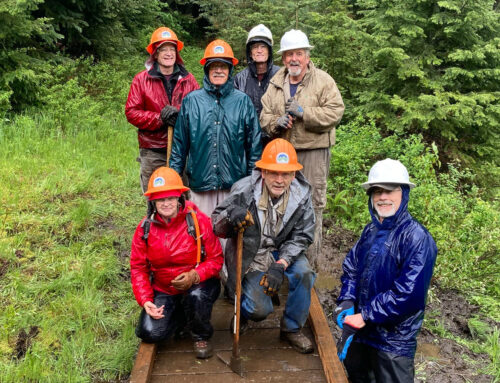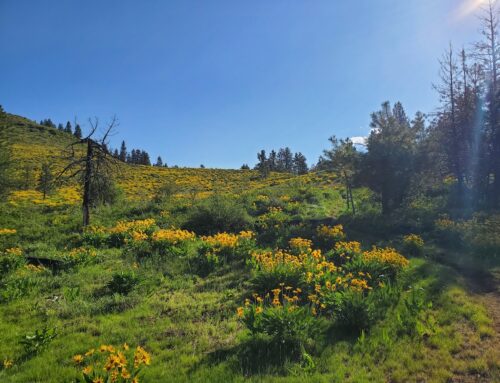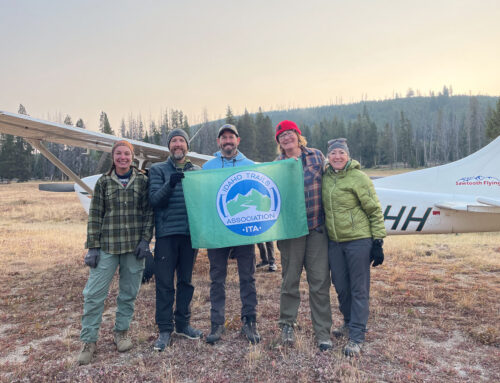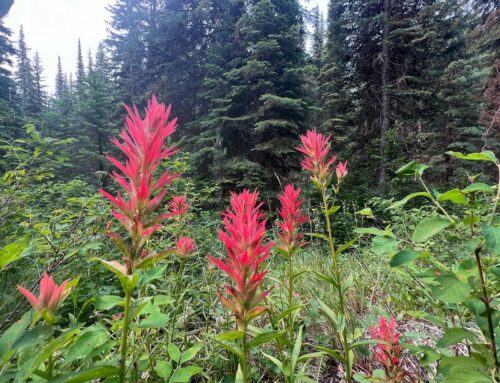One of the legal aspects of federally designated wilderness management is that motorized transport and mechanized equipment are prohibited within wilderness boundaries. The Wilderness Act, passed in 1964, states ‘…there should be no temporary road, no use of motor vehicles, motorized equipment or motorboats, no landing of aircraft, no other form of mechanical transport…’ As such, traditional tools for on-the-ground projects are used in these areas. These traditional tools include the crosscut saw, hand saw, loppers, ax, McLeod, and Pulaski.

The use of traditional tools and skills (TTS) for necessary administrative activities (i.e. trail work) in wilderness is a basic principle of wilderness stewardship and we have carried this principle forward into areas that are not designated wilderness. “Why”, you ask. When ITA was formed, there were several discussions as to what kind of experience we wanted. We know that working with traditional tools allows for a quieter and completely engine exhaust-free environment. We think this allows us to be closer to nature. Experience ITA crew leaders teach our volunteers how to use a variety of tools properly, and properly using hand tools is much safer than using a chainsaw. Our volunteer base is usually made up of enthusiastic and successful people who are interested in providing their muscle and minds to help maintain trails. They know they are going to be working hard and sweating and are good with that. In fact, that’s why many volunteers join us!
ITA volunteers get hands-on experience with the use of TTS under the direct supervision of an experienced sawyer and trail crew leader. One thing we found is that volunteers want to work. They don’t want to sit and watch someone else do everything. With non-motorized tools, everyone can be involved to the level they are comfortable. Volunteers take turns on the crosscut or, using an axe, Pulaski or loppers, prepare the next log that needs to be removed. A crew of six can have two people sawing, one person assisting with wedges and axe work and the others brushing and removing limbs. On big logs, as seen below, the sawyers switch off as folks get tired – and you will get tired!

One of the wonderful things about traditional tools is the slower pace the work is done, sawyers learn to listen to the wood talk. Popping and cracking means things are happening in the log and they adjust to what happening. With a noisy chainsaw, those clues are missed and the bar gets pinched and the sawyer wonders why. When a parent saws with a child, working as a team, it is a great bonding experience with a lot of laughter and fun. Sawyers learn to communicate about what they are feeling in the saw and log and earn a great feeling of accomplishment when the project is complete. When we talk about traditional skills we also have to take into consideration loppers. Loppers are critical to accomplishing quality trail work. With hand loppers you can carefully cut the brush and branches to leave a clean and healthy cut to the tree or brush, allowing the plant to survive and resist diseases and insects. It also ensures the brush will be cut properly so staubs and pungy sticks are not left to hurt people or livestock. When chainsaws are used to cut brush, there are usually long tattered stems left that not only look bad but can cause injury.
We hope you better understand why ITA has chosen to remain engine free. We also hope that we have either piqued your interest enough that you want to see these tools in person or reminded you just how fun it is to work a crosscut and swing a Pulaski! Check out this video to see some of these tools in action!
Come join us on a project in 2020! Take the first step and join or renew today!






Leave A Comment